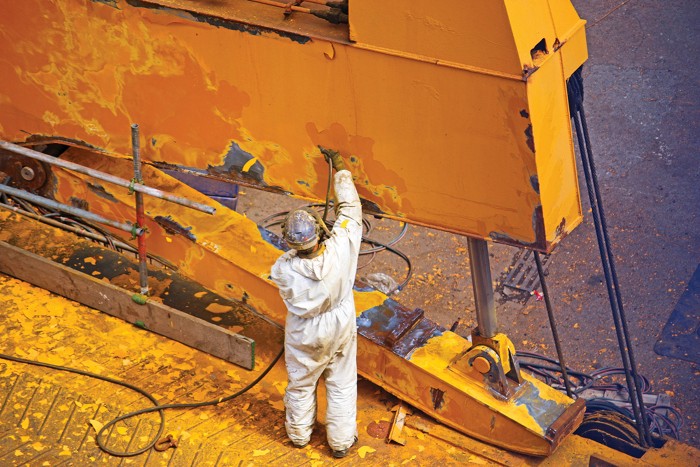Advertisement
Grab your lab coat. Let's get started
Welcome!
Welcome!
Create an account below to get 6 C&EN articles per month, receive newsletters and more - all free.
It seems this is your first time logging in online. Please enter the following information to continue.
As an ACS member you automatically get access to this site. All we need is few more details to create your reading experience.
Not you? Sign in with a different account.
Not you? Sign in with a different account.
ERROR 1
ERROR 1
ERROR 2
ERROR 2
ERROR 2
ERROR 2
ERROR 2
Password and Confirm password must match.
If you have an ACS member number, please enter it here so we can link this account to your membership. (optional)
ERROR 2
ACS values your privacy. By submitting your information, you are gaining access to C&EN and subscribing to our weekly newsletter. We use the information you provide to make your reading experience better, and we will never sell your data to third party members.
Chemical Regulation
EPA targets ethylene oxide used to sterilize medical devices and spices
Proposed rules aim to limit the use of the carcinogenic gas and implement additional worker protections
by Krystal Vasquez
April 13, 2023

The US Environmental Protection Agency has issued a pair of proposals that would cap the amount of ethylene oxide used to sterilize medical devices and some spices. The rules, which would provide additional protection for workers in sterilization facilities, are being opposed by the medical device industry.
The proposals continue an agency effort to crack down on the carcinogenic gas. A rule proposed less than a week earlier would implement stricter emissions standards for six air pollutants produced by synthetic organic chemical plants, including ethylene oxide.
Under the most recent rules, announced April 11, commercial sterilizers across the US would have 18 months to install equipment for monitoring indoor air and to begin reporting the data to the EPA twice a year. If indoor ethylene oxide concentrations exceed 10 parts per billion, workers would be mandated to wear personal protective equipment, such as respirators. In addition, the EPA would require facilities to be equipped with technologies that can reduce worker exposure even further by either capturing emissions or automating the transport of sterilized products.
Longer term, the new rules would also reduce the amount of ethylene oxide that plants can use during sterilization treatments. Current plans aim to limit concentrations to 500 mg per L or less within 5 years.
Combined, the proposals would “significantly reduce worker and community exposure to harmful levels of ethylene oxide,” EPA administrator Michael Regan says in a statement. According to the EPA’s latest risk assessment of ethylene oxide, 1 in 17 workers who sterilize medical devices will develop cancer by the end of their career unless protections are put in place. For workers sterilizing spices, that estimate is 1 in 36.
Because of these health risks, environmental organizations such as Earthjustice support the proposals but argue that they don’t go far enough. The proposed rule “does not require fenceline monitoring,” Earthjustice attorney Marvin Brown says in a statement. The EPA “must go further and ensure that frontline communities have the data to know when their air is safe.”
Meanwhile, medical device manufacturers oppose the rules. In a statement, Scott Whitaker, CEO of the industry lobby group Advanced Medical Technology Association, warns that the stricter regulations could force sterilization facilities to close. If such closures happen, “patients could face treatment delays as sterile technology supplies, such as pacemakers and surgical equipment, fall short,” he says.
According to the US Food and Drug Administration, ethylene oxide is used to sterilize 50% of all sterile medical devices in the US. For many devices, such as catheters and syringes, it is the only method that can adequately sterilize them. An FDA spokesperson says the agency is working closely with medical device companies to help them meet the EPA standards while simultaneously “developing solutions to avoid potential shortages of devices that the American public relies upon.





Join the conversation
Contact the reporter
Submit a Letter to the Editor for publication
Engage with us on Twitter